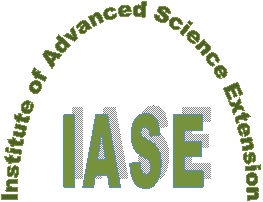International
ADVANCED AND APPLIED SCIENCES
EISSN: 2313-3724, Print ISSN: 2313-626X
Frequency: 12
![]()
Volume 12, Issue 3 (March 2025), Pages: 20-27
----------------------------------------------
Technical Note
AccoSoft: An accounting system for an onion cooperative using multi-paradigm programming languages
Author(s):
Affiliation(s):
College of Information and Communications Technology, Nueva Ecija University of Science and Technology, Cabanatuan City, Philippines
Full text
* Corresponding Author.
 Corresponding author's ORCID profile: https://orcid.org/0000-0001-8532-6971
Corresponding author's ORCID profile: https://orcid.org/0000-0001-8532-6971
Digital Object Identifier (DOI)
https://doi.org/10.21833/ijaas.2025.03.003
Abstract
This study aimed to develop an accounting system for an onion cooperative in Nueva Ecija, called "ACCOSOFT," which stands for Accounting Software. ACCOSOFT is an analytical accounting tool that utilizes various financial indicators to track and record KASAMNE’s budget and financial statements. The system is designed to present financial information in multiple formats, based on the needs of accounting staff, rather than simply balancing accounts. It also supports the cooperative with account management, disbursement, collection, journal entries, and report generation, including trial balance, balance sheet, and income statement. The researchers used multi-paradigm programming languages, enabling them to select the best programming style and language features for building the system. Specifically, they employed Visual Basic.Net (Microsoft Visual Studio 2010 Express) as the front-end language and HTML, CSS, JavaScript, and PHP for report generation. MariaDB, run through XAMPP, was used for the database.
© 2025 The Authors. Published by IASE.
This is an
Keywords
Accounting software, Financial tracking, Report generation, Budget management, Multi-paradigm programming
Article history
Received 19 June 2024, Received in revised form 27 January 2025, Accepted 13 February 2025
Acknowledgment
The researchers would like to extend their heartfelt gratitude to the respondents of this study for their invaluable contributions and insights. Your willingness to share your experiences and knowledge has significantly enriched this research and has been instrumental in shaping the development of the AccoSoft application. We would also like to express our sincere appreciation to the Nueva Ecija University of Science and Technology (NEUST) for providing the necessary support and resources throughout this research project. The guidance and encouragement from the faculty and administration have been essential to our success.
Compliance with ethical standards
Ethical considerations
Informed consent was obtained from all participants, and data confidentiality was maintained throughout the study.
Conflict of interest: The author(s) declared no potential conflicts of interest with respect to the research, authorship, and/or publication of this article.
Citation:
Luciano RG, Bauat RV, and Bauat MM (2025). AccoSoft: An accounting system for an onion cooperative using multi-paradigm programming languages. International Journal of Advanced and Applied Sciences, 12(3): 20-27
Figures
Tables
----------------------------------------------
References (12)
- Bhatta B and Hiebl MR (2022). Coding skills for accountants. In: Bhatta B and Hiebl M (Eds.), The Routledge handbook of accounting information systems: 190-209. Routledge, Oxfordshire, UK. https://doi.org/10.4324/9781003132943-16 [Google Scholar]
- Ferreira GF, Pessoa JG, Pinto LF, Maciel Filho R, and Fregolente LV (2021). Mono-and diglyceride production from microalgae: Challenges and prospects of high-value emulsifiers. Trends in Food Science & Technology, 118: 589-600. https://doi.org/10.1016/j.tifs.2021.10.027 [Google Scholar]
- Korompis SN, Rumambi HD, Pantow AK, Toweula A, and Kaparang R (2023). Analysis of accounting system requirements for construction companies. International Journal of Academic Research in Accounting Finance and Management Sciences, 13(1): 359-372. https://doi.org/10.6007/IJARAFMS/v13-i1/16304 [Google Scholar]
- Luciano RG (2020). Design and development of human resource information system (HRIS) for private HEIS. International Journal of Scientific and Technology Research, 9(3): 215-222. [Google Scholar]
- Olufemi OO, Festus AF, and Adekunle AM (2021). Accounting software in computerized business environment and quality of corporate reporting. Journal of Finance and Accounting, 9(3): 101-110. https://doi.org/10.11648/j.jfa.20210903.16 [Google Scholar]
- PCC (2017). Republic Act No. 9520, Philippine cooperative code of 2008 and revised implementing rules and regulations. Philippine Cooperative Center, Quezon City, Philippines.
- Prokofyeva N and Boltunova V (2017). Analysis and practical application of PHP frameworks in development of web information systems. Procedia Computer Science, 104: 51-56. https://doi.org/10.1016/j.procs.2017.01.059 [Google Scholar]
- Ramachandran M (2015). Software security requirements engineering: State of the art. In: Jahankhani H, Carlile A, Akhgar B, Taal A, Hessami A, and Hosseinian-Far A (Eds.), Global security, safety and sustainability: Tomorrow's challenges of cyber security: 313-322. Springer, Berlin, Germany. [Google Scholar]
- Thottoli MM (2021). Knowledge and use of accounting software: Evidence from Oman. Journal of Industry-University Collaboration, 3(1): 2-14. https://doi.org/10.1108/JIUC-04-2020-0005 [Google Scholar]
- Van Roy P, Haridi S, Schulte C, and Smolka G (2020). A history of the Oz multiparadigm language. Proceedings of the ACM on Programming Languages, 4(HOPL): 83. https://doi.org/10.1145/3386333 [Google Scholar]
- Wahyuni T (2023). Accounting information systems for SMEs: A systematic literature review. In the 6th International Conference on Vocational Education Applied Science and Technology, Atlantis Press: 719-730. https://doi.org/10.2991/978-2-38476-132-6_61 [Google Scholar]
- Xu M, David JM, and Kim SH (2018). The fourth industrial revolution: Opportunities and challenges. International Journal of Financial Research, 9(2): 90-95. https://doi.org/10.5430/ijfr.v9n2p90 [Google Scholar]

